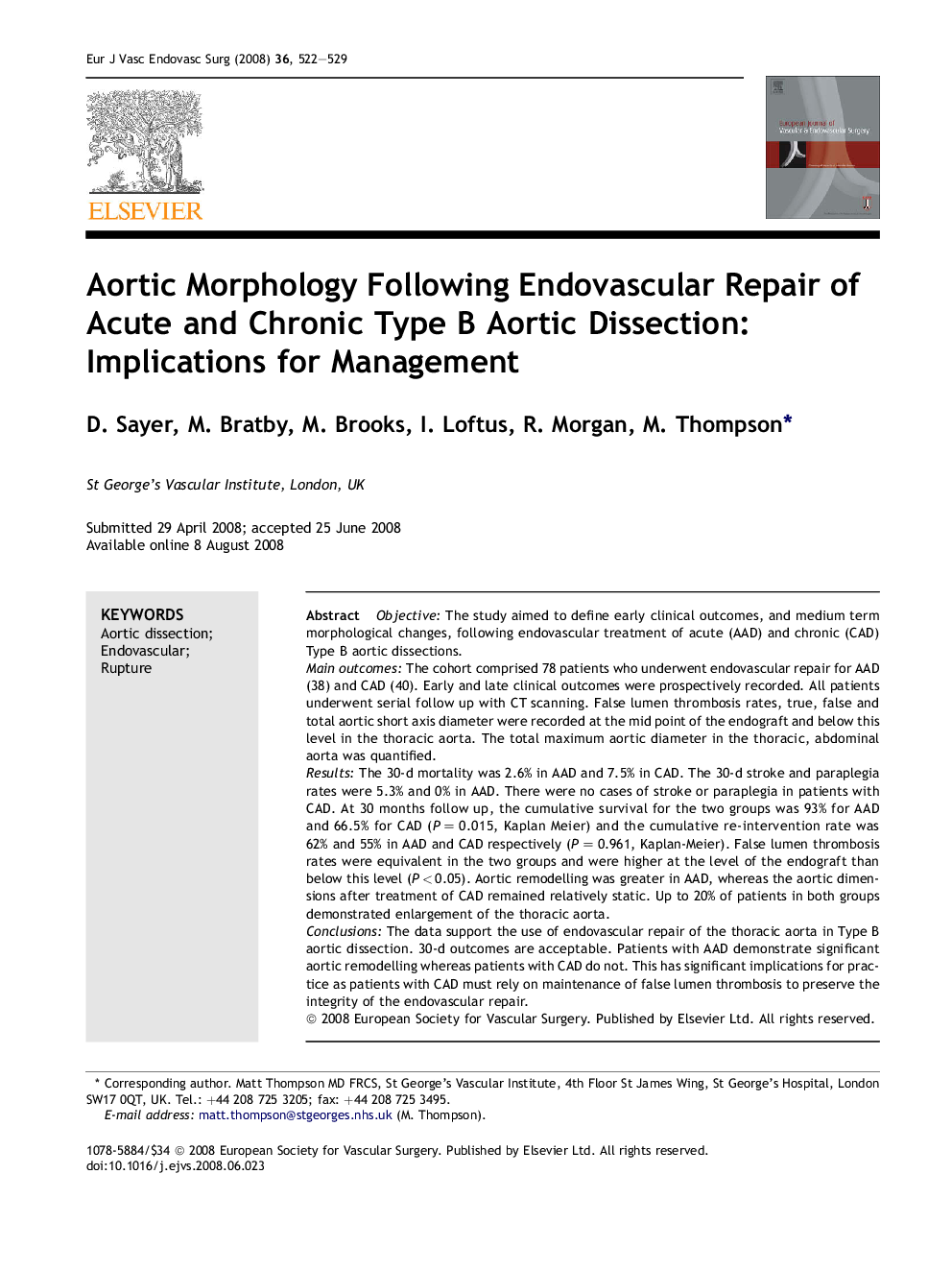| کد مقاله | کد نشریه | سال انتشار | مقاله انگلیسی | نسخه تمام متن |
|---|---|---|---|---|
| 2913623 | 1575525 | 2008 | 8 صفحه PDF | دانلود رایگان |

ObjectiveThe study aimed to define early clinical outcomes, and medium term morphological changes, following endovascular treatment of acute (AAD) and chronic (CAD) Type B aortic dissections.Main outcomesThe cohort comprised 78 patients who underwent endovascular repair for AAD (38) and CAD (40). Early and late clinical outcomes were prospectively recorded. All patients underwent serial follow up with CT scanning. False lumen thrombosis rates, true, false and total aortic short axis diameter were recorded at the mid point of the endograft and below this level in the thoracic aorta. The total maximum aortic diameter in the thoracic, abdominal aorta was quantified.ResultsThe 30-d mortality was 2.6% in AAD and 7.5% in CAD. The 30-d stroke and paraplegia rates were 5.3% and 0% in AAD. There were no cases of stroke or paraplegia in patients with CAD. At 30 months follow up, the cumulative survival for the two groups was 93% for AAD and 66.5% for CAD (P = 0.015, Kaplan Meier) and the cumulative re-intervention rate was 62% and 55% in AAD and CAD respectively (P = 0.961, Kaplan-Meier). False lumen thrombosis rates were equivalent in the two groups and were higher at the level of the endograft than below this level (P < 0.05). Aortic remodelling was greater in AAD, whereas the aortic dimensions after treatment of CAD remained relatively static. Up to 20% of patients in both groups demonstrated enlargement of the thoracic aorta.ConclusionsThe data support the use of endovascular repair of the thoracic aorta in Type B aortic dissection. 30-d outcomes are acceptable. Patients with AAD demonstrate significant aortic remodelling whereas patients with CAD do not. This has significant implications for practice as patients with CAD must rely on maintenance of false lumen thrombosis to preserve the integrity of the endovascular repair.
Journal: European Journal of Vascular and Endovascular Surgery - Volume 36, Issue 5, November 2008, Pages 522–529